| Life at the Close of the
Century
In 1887, Darlaston's first sewage works opened at
Bentley, but it still took another 40 years before
sewers were laid in all of the streets, so the old
fashioned privies, and the night soil men prevailed. At
this time Darlaston was a thriving town, with plenty of
shops catering for all of the population's needs. King
Street had a look of affluence that has now been
forgotten. The shops in King
Street were listed in Kelly's Directory for
Staffordshire in 1885, some of the more interesting ones
were: |
|
Street
Number |
Proprietor |
Type of Business |
| 1 |
Lucy Corbet |
Milliner |
| 2 |
John Walk |
Outfitter |
| 3 |
George Butler |
Boot & Shoe Maker |
| 4 |
George Cartwright |
Fruiterer |
| 5 |
Thomas Share |
Boot Maker |
| 6 |
William Hitch |
Poulterer |
| 8 |
Elizabeth Hawkes |
Tobacconist |
| 9 |
British & Colonial |
Butcher |
| 10 |
William Kinsey |
Clothier |
| 11 |
William Powell |
Grocer |
| 12 |
George Haynes |
Butcher |
| 13 |
Vincent Wilkes |
Florist |
| 14 |
Philomon Giles |
Green Grocer |
| 15 |
Henry Bayley |
Pork Butcher (lived next
door at no.16) |
| 17 |
John Westmorland |
Baker |
| 18 & 19 |
Wm. Clifford Peach |
Draper |
| 20 & 21 |
Mary Butler |
Chemist |
| 22 |
Zachariah Simkin |
Boot and Shoe Maker |
| 23 & 24 |
Alfred Wilkes |
Haberdasher |
| 25 |
Samuel Bridgewater |
Provision & Hay Dealer |
| 26 |
Abraham Kimberley |
Ironmonger & Tinsmith |
| 27 |
Thomas Penrice |
Master Butcher |
| 28 |
Mark Marston |
Sweet Shop & Gun-Lock
Filer |
| 29 & 30 |
Dog and Partridge |
Public House |
| 31 |
Anne & Saphina Sansom |
Private Girl's School
(Poplar House) |
| 32 |
John Mosley Price |
Printer, Bookseller,
Newsagent, & Stationer |
| 33 |
Samuel Dangerfield
Rebecca Dangerfield |
Relieving Officer -
Darlaston area
Corset Maker |
| 34 |
Eli Granger |
Fishmonger |
| 35 |
James Harris |
Grocer |
| 36 |
James Watts |
White Lion public house |
| 37 |
John Thomas |
Fishmonger |
| 38 |
Ellen Anne Wright |
Post Office |
| 39 |
Mary Baker |
Ironmonger |
| 40 |
Francis James Mills |
Boot Dealer |
| 41 |
John Wilkes |
New Inn public house |
| 43 |
Mrs. William Small |
Dress Maker & Milliner |
| 44 |
Frederick Warren |
Queen's Head public
house |
| 47 |
Edward Teece |
Poulterer |
| 50 |
Samuel Jacques |
Boot Repairer |
| 51 |
Richard Pickerell |
General Dealer -
Holloware, Toys, Tea etc. |
| 52 |
Joseph Griffiths |
Hosier |
| 53 |
Star Tea Company |
Grocer |
| 54 & 55 |
William Harrison |
Draper |
| 56 |
William Parker |
Druggist and Chemist |
| 57 |
Richard Cotterell |
Waggon & Horses public
house |
| 58 |
Alex MacMillan |
Draper |
| 59 |
Robert Hall |
Pawnbroker |
| 60 |
Samuel Partridge |
Doctor and Medical
Officer of Health |
| In those days most things could be purchased here
and so there was little need for anyone to shop
elsewhere. Next to the Black
Horse pub in Pinfold Street was the shop of William
Winn; grocer, wine and spirit merchant. In the early
1890s he purchased an electricity generator, and was one
of the first people in the area to have electric
lighting. He let it be known when the lights would be
switched on, and people flocked from miles around to see
them. He was a very successful businessman and did a
record trade at this time. He lived at Ilmington
in Crescent Road, which was, and still is one of the
most splendid houses in Darlaston. He was a member of
the council, and made a gift of the trees in Crescent
Road to the town. |
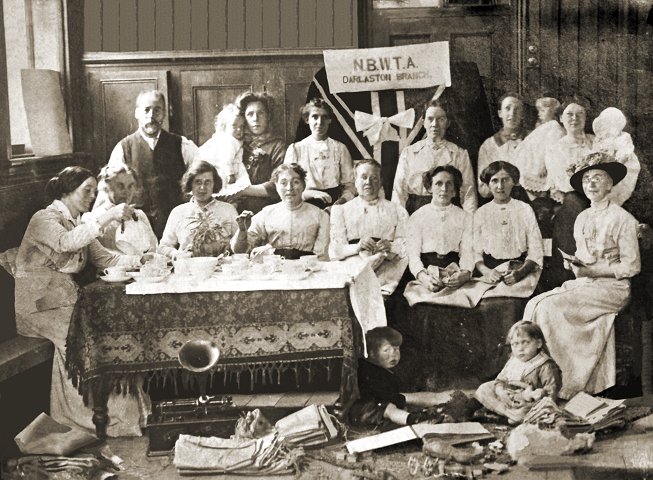
Members of the Darlaston branch of
the National British Women's Temperance Association. The
association was founded in 1893 as an offshoot of the
British Women's Temperance Association, but began to
suffer from falling membership around the time of the
First World War. In 1926 it became part of the National
British Women's Temperance Association Union. From the
collection of the late Howard Madeley. |
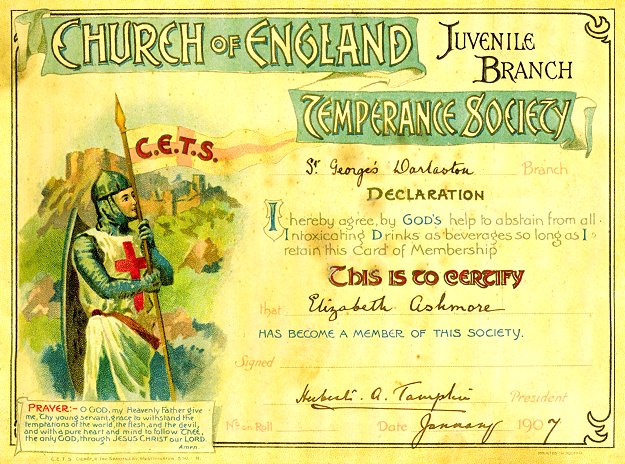
The Church of England also had a
temperance society, that met at St. George's Church.
Courtesy of John and Christine Ashmore. |
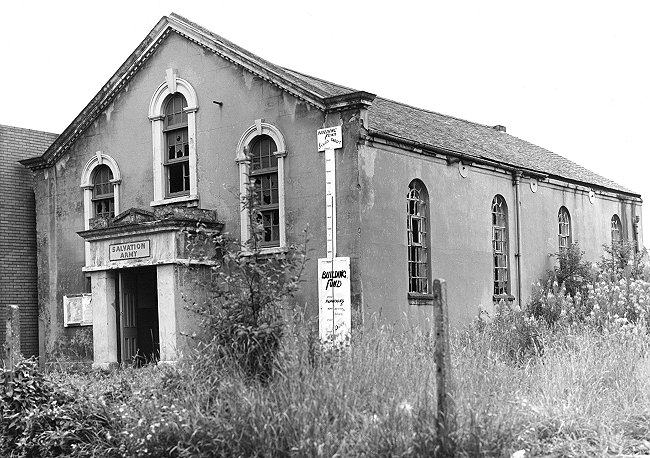
The British Women's Temperance
Association met in the Temperance Hall in High Street,
which by 1887 had been taken over by the Salvation Army. It is seen here,
awaiting demolition in the early 1970s, in readiness for
the building of the original ASDA store. |

Pinfold Street and the Bull
Stake in the late 1950s. The Old Castle Hotel and most
of the buildings on the far side of the street
disappeared when St Lawrence Way was built in the early
1970s. |
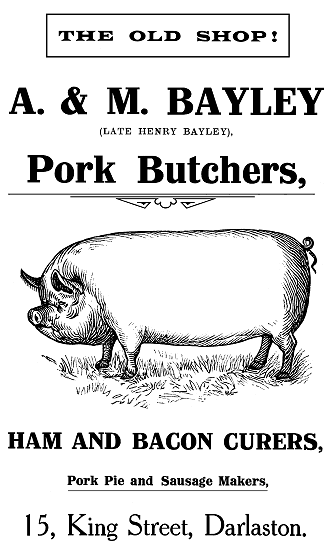 |
|
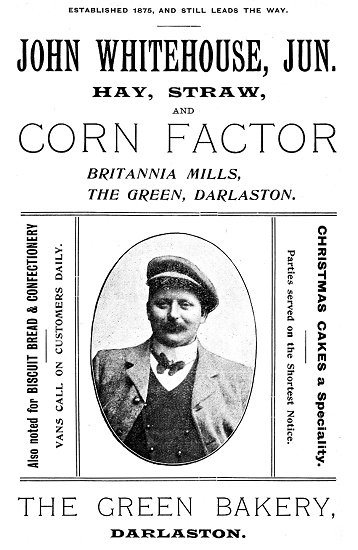 |
|
An
advert from 1916. |
|
An
advert from 1906. |
|
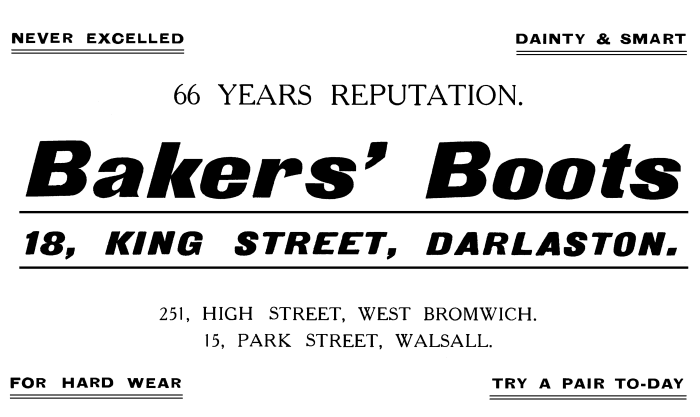
An advert from 1916.

A shop on the corner of
Gladstone Street in about 1896. It was run by the
Yates family and in the doorway is Elizabeth Yates. Courtesy of Ian Beach. |
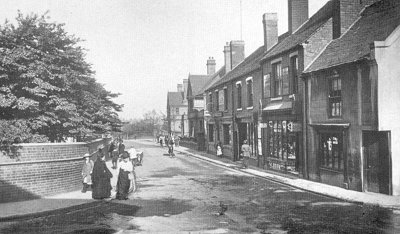 |
Victoria Road in about 1910.
The scene has changed very little since the photograph
was taken. In the centre on the left is the Swan Hotel
which still has the original windows The one on the far
side facing the Town Hall still bears the name of Samuel
Canlett who was the landlord in the late 19th and early
20th century. He also ran a pork butcher's business from the
pub. |
| Rough Hay House, which
must have been the oldest house in Rough Hay. It
stood on the northern side of Rough Hay Road, about
50 metres west of the junction with Willenhall
Street. From the
collection of the late Howard Madeley. |
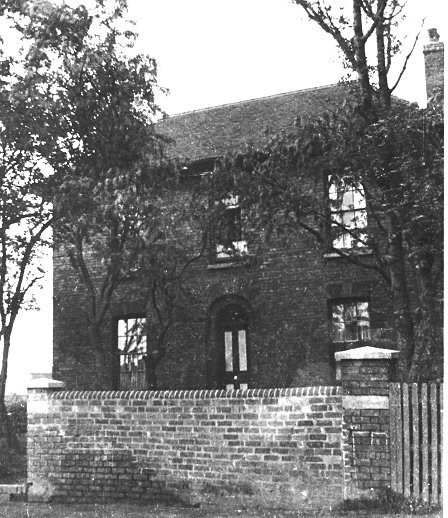 |
|
Darlaston manufacturing companies, listed in Peck's 1896
to 97 Circular Directory:
 |
 |
 |
 |
Return to
Education |
Return to
Contents |
Proceed to Notable
19th Century People |
|